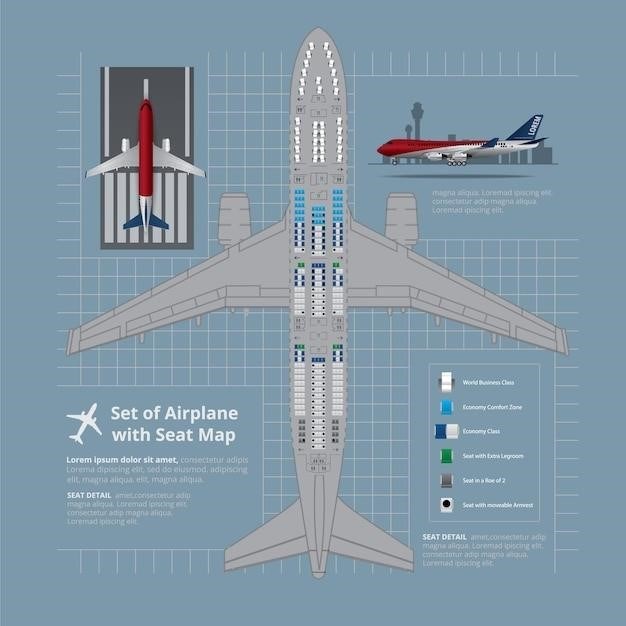f22 flight manual

f22 flight manual
F-22 Flight Manual⁚ An Overview
The F-22A Raptor flight manual, a crucial document for Air Force personnel, details training, qualification, and certification for F-22 pilots. Multiple versions exist, reflecting updates and changes over time. Its classification level is highly restricted.
Official Air Force Manual
The F-22A Raptor flight manual is an official publication of the United States Air Force (USAF). Designated as Air Force Manual 11-2F-22A, it represents the USAF’s minimum standards for training and certifying personnel to operate the advanced F-22 fighter jet. This comprehensive document outlines procedures, safety protocols, and operational guidelines necessary for proficient and safe handling of this sophisticated aircraft. Its official status ensures uniformity in training and operational practices across the Air Force. The manual is regularly updated to incorporate technological advancements, safety improvements, and lessons learned from operational experience. Access to this document is strictly controlled due to its sensitive nature and the advanced capabilities of the F-22 aircraft. Any unauthorized access or dissemination is a serious security breach.
Accessibility and Classification
Access to the F-22A Raptor flight manual is severely restricted due to its highly classified nature. The manual contains sensitive information regarding the aircraft’s capabilities, operational limitations, and advanced systems, making its unauthorized release a significant security risk. Only authorized Air Force personnel with the appropriate security clearance and need-to-know basis have access to the full document. Even within the Air Force, access is controlled through a strict system of authorization and distribution. Online leaks or unofficial copies are extremely rare and illegal. Attempts to obtain the manual through unofficial channels are illegal and could have serious consequences. The classification level reflects the critical role the F-22 plays in national defense and the need to protect its operational secrets.
Variations and Versions
The F-22A Raptor flight manual is not a static document; it undergoes revisions to reflect software updates, system modifications, and lessons learned from operational experience. Different versions may exist, catering to specific training needs or addressing specific aircraft configurations. These variations might include changes to procedures, performance data, or emergency protocols. Furthermore, the existence of supplemental training materials and technical orders (TOs) expands the documentation beyond the core flight manual, providing additional context and detailed information for various aspects of F-22 operation and maintenance. The version number and date of publication are critical details for ensuring that pilots and maintenance personnel are working with the most up-to-date information. Inconsistencies between versions could pose significant operational risks.
Understanding the F-22 Flight Manual’s Contents
This essential document covers a wide range of topics, from basic flight maneuvers to advanced combat tactics and critical emergency procedures. It’s a comprehensive guide for F-22 operations.
Basic Flight Maneuvers
The F-22 flight manual meticulously details fundamental flight operations, providing pilots with a structured approach to mastering the aircraft’s unique characteristics. These sections cover essential procedures such as takeoff and landing, taxiing, and low-speed flight. Detailed diagrams and illustrations complement the textual instructions, ensuring clarity and ease of understanding. Pilots learn to execute controlled climbs, descents, and turns within specified parameters, adhering to safety regulations and performance limitations. The manual emphasizes the importance of precision and adherence to standardized procedures, crucial for maintaining flight safety and operational efficiency. Specific instructions address handling the aircraft in various weather conditions and potential emergencies. These foundational maneuvers lay the groundwork for more advanced flight techniques described in subsequent sections of the comprehensive manual, preparing pilots for a wide range of operational scenarios.
Advanced Air Combat Maneuvers
Beyond basic flight, the F-22 flight manual delves into sophisticated air combat techniques. These sections cover high-speed maneuvers, high-G turns, and energy management strategies crucial for air superiority. Detailed explanations of advanced tactics like high-angle-of-attack flight and thrust vectoring utilization are provided. The manual emphasizes the importance of situational awareness and decision-making under pressure, critical for success in dynamic combat environments. Pilots learn to employ advanced sensor technologies and integrate them with their maneuvering skills for optimal effectiveness. Detailed illustrations and flight simulations aid in comprehension and practice. The manual stresses the need for rigorous training and proficiency in these maneuvers, as they represent a significant departure from standard flight procedures and demand exceptional pilot skill and coordination.
Emergency Procedures and Systems
A critical section of the F-22 flight manual focuses on emergency procedures and the aircraft’s various safety systems. Detailed instructions are provided for handling engine failures, loss of control surfaces, and other critical malfunctions. Procedures for emergency landings, ejections, and survival techniques are comprehensively covered. The manual emphasizes the importance of rapid and accurate assessment of the situation, followed by decisive action based on established protocols. Detailed diagrams and checklists guide pilots through each emergency scenario. The integration of redundant systems and backup mechanisms is highlighted, along with their proper operation and limitations. Clear explanations of the aircraft’s onboard warning systems and their interpretations are included. The manual also addresses post-emergency procedures, such as reporting and post-flight inspections, ensuring the pilot’s safety and the integrity of the aircraft. Extensive training is crucial to ensure pilots are prepared to handle any emergency safely and effectively.
Accessing and Utilizing the Manual
Access to the official F-22 flight manual is strictly controlled. Authorized personnel utilize secure online databases and physical archives. Third-party simulations offer limited, unofficial access for training purposes.
Online Resources and Databases
Accessing the official F-22A Raptor flight manual directly online requires authorized access through secure Air Force databases. These systems are not publicly accessible due to the sensitive and classified nature of the information contained within the manual. Unauthorized access is strictly prohibited and carries significant legal repercussions. Information found on public websites, such as unofficial summaries or excerpts, should be treated with extreme caution, as their accuracy and completeness cannot be guaranteed. Always verify information obtained from unofficial sources with official documentation if possible. The official manuals are regularly updated, reflecting changes in procedures, maintenance, and systems upgrades; therefore, relying on outdated information can be detrimental to safety and operational efficiency. Remember, only authorized personnel with appropriate security clearance can access the complete and up-to-date version of the F-22A Raptor flight manual through the designated Air Force systems.
Third-Party Simulations and Models
Numerous third-party companies offer simulations and models of the F-22A Raptor, providing a glimpse into its flight characteristics and systems. These simulations, available for various platforms like flight simulators (MSFS2020), often include detailed cockpits and flight models, though they are not replacements for the official flight manual. While these simulations can be valuable training tools for enthusiasts and hobbyists, they should not be considered substitutes for official Air Force training or the actual flight manual. Remember, these simulations are not perfect representations of the real aircraft and may contain inaccuracies or limitations. Furthermore, any manuals or guides provided with these simulations are for the specific software product and should not be confused with the official Air Force F-22A Raptor flight manual. Always consult official documentation for accurate and up-to-date information regarding the aircraft’s operation and capabilities.
Legal and Ethical Considerations
Access to and use of the official F-22A Raptor flight manual are strictly controlled due to its classified nature and sensitive information. Unauthorized possession, distribution, or reproduction of the manual is a serious offense with potential legal ramifications, including severe penalties. Ethical considerations also play a vital role; respecting intellectual property rights and national security is paramount. The information within is proprietary to the United States Air Force and should only be accessed and utilized by authorized personnel. Any attempt to circumvent these restrictions is a violation of both the law and ethical conduct. Furthermore, using information from unofficial sources to operate or understand the F-22 is strongly discouraged, as inaccuracies could lead to dangerous consequences. Always adhere to the law and act responsibly when dealing with classified military information.

Specific Information Within the Manual
The F-22 flight manual contains detailed performance characteristics, operational limitations, and essential maintenance and servicing procedures for the aircraft. This ensures safe and effective operation.
Performance Characteristics
The F-22 flight manual meticulously documents the aircraft’s performance capabilities, providing essential data for pilots and maintenance crews. This includes crucial details on speed, altitude, range, and maneuverability under various conditions. Specific data points, such as maximum speeds at different altitudes, rate of climb, and turning performance at various speeds and altitudes, are crucial elements. The manual also details performance in different flight regimes, from low-speed flight to supersonic speeds. Furthermore, the impact of various factors, including fuel load, weapons configuration, and environmental conditions (temperature, wind, etc.), on overall performance are carefully analyzed and presented. Detailed information on engine performance, thrust-to-weight ratios, and fuel consumption rates are also included to optimize mission planning and fuel management. This comprehensive performance data is essential for safe and effective mission execution. Understanding these performance characteristics is crucial for pilots to execute complex maneuvers and missions while maintaining aircraft integrity. The accuracy of this data is vital for mission success and pilot safety.
Operational Limitations
The F-22 flight manual explicitly outlines operational limitations to ensure safe and effective aircraft operation. These limitations encompass various flight parameters, such as minimum and maximum speeds at different altitudes, angle of attack restrictions to prevent stalls or aerodynamic issues, and load factor limits to protect the airframe from excessive stresses during maneuvers. Specific restrictions related to high-G maneuvers, low-speed flight characteristics, and flight within specific environmental conditions (e.g., icing, extreme temperatures) are clearly defined. Operational limitations also address the aircraft’s capabilities concerning weapon systems, fuel capacity, and ground handling procedures. These limitations are crucial for preventing accidents and ensuring the longevity of the aircraft. Adherence to these parameters is non-negotiable for mission success and the safety of the pilot and the aircraft. The manual emphasizes the importance of understanding and respecting these limits to maintain the aircraft’s operational readiness and prevent potential damage. Any deviation requires thorough risk assessment and approval from designated authorities.
Maintenance and Servicing
The F-22 flight manual contains a dedicated section on maintenance and servicing procedures, crucial for preserving the aircraft’s operational readiness and extending its lifespan. This section details scheduled maintenance tasks, including inspection intervals for critical components like the engines, avionics, and flight control systems. Specific procedures for troubleshooting common malfunctions, along with detailed instructions for replacing or repairing damaged parts, are provided. The manual emphasizes the importance of using only authorized parts and adhering to strict safety protocols during all maintenance activities. It also outlines procedures for handling hazardous materials and disposing of waste properly. Detailed diagrams and illustrations supplement the textual descriptions, ensuring clarity and facilitating efficient maintenance operations. The manual’s comprehensive approach ensures that maintenance personnel are equipped with the necessary knowledge and guidance to maintain the F-22’s operational effectiveness. Regular and thorough maintenance is critical to the aircraft’s continued safe and reliable operation.

Related Documents and Resources
Supplemental training materials, technical orders (TOs), and manuals for related aircraft (e.g., F-16, F-35) offer valuable supplementary information.
Supplemental Training Materials
Beyond the core F-22A flight manual, a range of supplemental training aids exists to enhance pilot proficiency and understanding. These materials might include detailed checklists for various flight phases, interactive simulations replicating real-world scenarios, and specialized training videos demonstrating critical maneuvers or emergency procedures. Such resources often incorporate updated information reflecting technological advancements or changes in operational tactics. The availability and access to these supplemental materials are typically controlled and restricted to authorized personnel, ensuring that only qualified individuals receive the necessary training and information. These resources are designed to complement the official manual, providing a more comprehensive and practical learning experience for F-22 pilots.
Technical Orders (TOs)
Complementing the F-22A flight manual are Technical Orders (TOs), which provide detailed instructions for maintenance, repair, and servicing of the aircraft’s complex systems. These documents are essential for ground crews and maintenance personnel responsible for the aircraft’s upkeep and readiness. TOs often include schematics, diagrams, and step-by-step procedures for troubleshooting malfunctions and performing routine maintenance tasks. They ensure that all maintenance is conducted according to strict standards, maintaining the aircraft’s operational integrity and safety. The complexity of the F-22 necessitates a comprehensive and meticulously detailed set of TOs, reflecting the aircraft’s advanced technology and demanding operational requirements. Access to and use of these documents are strictly controlled within the Air Force’s maintenance and logistics system. Updates to TOs are regularly released to reflect any changes or improvements in maintenance procedures.
Related Aircraft Manuals (e.g., F-16, F-35)
While the F-22 flight manual is unique due to the aircraft’s advanced capabilities, pilots and maintenance personnel may find comparative information useful in manuals for other advanced fighter jets. The F-16 and F-35 manuals, for instance, might offer insights into related systems or operational procedures. These comparisons, however, should be approached cautiously, acknowledging significant differences in design philosophy and technological implementation between the aircraft. Cross-referencing information across different aircraft manuals can aid in understanding broader aviation principles and may offer supplementary training value. However, direct application of procedures from one aircraft’s manual to another should be avoided without expert guidance and thorough verification of compatibility. The unique characteristics of the F-22 necessitate reliance on its dedicated manual for safe and effective operation.